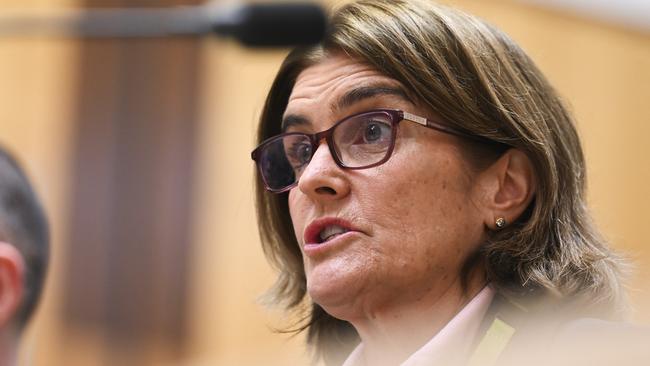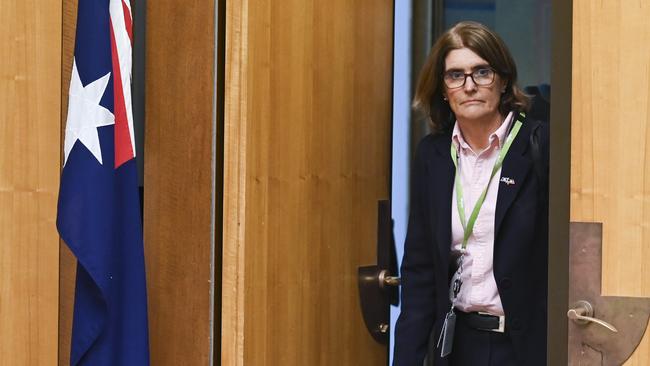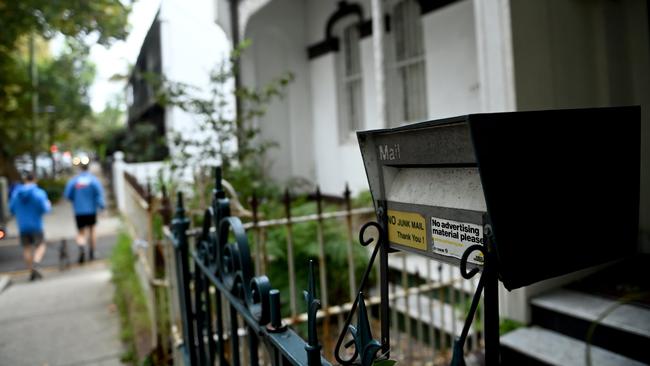Reserve Bank delivers borrowers Melbourne Cup Day blow with fresh rate hike
Freshly minted RBA governor Michele Bullock has dealt borrowers fresh rate pain as the central bank grapples to tame persistent inflationary pressures.
Interest Rates
Don't miss out on the headlines from Interest Rates. Followed categories will be added to My News.
Reserve Bank governor Michele Bullock has dealt a fresh blow to borrowers with a 13th interest rate rise while cautioning that inflation will be higher in 2024 than previously expected.
Ms Bullock said Tuesday’s decision to lift rates by 25 basis points to 4.35 per cent was necessary as progress on lowering inflation had been slower than anticipated.
“The board judged an increase in interest rates was warranted today to be more assured that inflation would return to target in a reasonable time frame,” Ms Bullock said in a statement accompanying the decision.
A rebound in property prices, still-hot services inflation and the resilience of the jobs market meant inflationary pressures were more persistent than the RBA had forecast, forcing the central bank to hike rates in order to return inflation to the bank’s 2 to 3 per cent time frame.

Revised inflation forecasts, released by the central bank, showed inflation over the next year would remain higher than previously anticipated.
By the end of 2024, the central bank expects inflation will still be running at 3.5 per cent, up from its August forecast of 3.25 per cent.
But the RBA forecasts inflation will still fall below 3 per cent by the end of 2025.
“Since its August meeting, the board has received updated information on inflation, the labour market, economic activity and the revised set of forecasts,” Ms Bullock said.
“The weight of this information suggests that the risk of inflation remaining higher for longer has increased.
“While the economy is experiencing a period of below-trend growth, it has been stronger than expected over the first half of the year.”
The possibility of another rate hike, the governor said, would depend on the economic data and evolving assessment of risks, saying “the board remains resolute in its determination to return inflation to target and will do what is necessary to achieve that outcome”.
“In making its decisions, the board will continue to pay close attention to developments in the global economy, trends in domestic demand and the outlook for inflation and the labour market.”

Economists split on RBA’s next move
Following the decision, economists were split over whether a further tightening will be needed to push inflation, currently at 5.4 per cent, back to target as forecast.
Financial markets priced just a 7 per cent chance of a final hike for the year when the bank meets on December 5, and a 36 per cent chance of a move higher when the RBA board meets for its first meeting of 2024 in February.
Oxford Economics head of macroeconomic forecasting Shaun Langcake said a combination of strong services inflation and fast wages growth would keep pressure on the RBA to tighten monetary policy further.
“We don’t think this will be an isolated rate hike. If the RBA are worried enough about the inflation outlook to hike rates, we don’t think a single 25 basis point increase will assuage their concerns,” Mr Langcake said.
If wages data, to be released next Wednesday, was particularly strong this would “probably be enough” to ensure another hike in December, he said.
Westpac chief economist Luci Ellis agreed that while further rate hikes were possible, there was not enough new information to warrant another rate hike in December.
“Given the upgraded inflation forecasts and lower unemployment forecast, though, they are likely to have even less tolerance for upside surprises than they indicated in recent communication,” Ms Ellis said.
“While a December move is unlikely, it is more likely that February meeting would become ‘live’ if the inflation outlook continues to lift.”
Commonwealth Bank chief economist Gareth Aird said updated economic indicators released before the RBA’s first meeting of 2024 would ease pressure on the central bank to deliver another hike.
“Our expectation is that there will be enough signs in the data by early next year for the RBA to conclude that a further increase in the cash rate is not warranted,” he said.
Households feel the pinch
Ahead of the hike, analysis from the Australian National University showed almost half of Australia’s households were diverting at least 30 per cent of their disposable income – a standard gauge of mortgage stress – to service their debts.
With rates surging by 425 basis points since May 2022, households with an average variable-rate mortgage of $585,000 will be spending an additional $1513 every month on repayments if the banks pass through the latest rate hike in full.
Higher interest rates have also substantially diminished the amount households can borrow.
A family with two children and a household income of $150,000 have seen their borrowing capacity slide by almost 30 per cent.
The Cup Day hike is the first time in five months that the RBA has raised interest rates after taking an extended pause since June as it waited to assess the delayed impact of the 12 previous hikes.

The full effect of interest rates typically takes between 12 to 18 months to flow through the economy. Due to an increase in fixed-rate lending during the pandemic, the transition may be even slower through this tightening cycle.
November’s decision followed the release of fresh inflation data that revealed price pressures rebounded in the September quarter, as soaring costs for fuel, rents and across the labour-intensive services sector pushed headline inflation to 1.2 per cent in the September quarter, up from 0.8 per cent in June.
Ahead of the central bank’s meeting, the International Monetary Fund had urged the Reserve Bank to lift interest rates higher and for federal, state and territory to slash or delay some infrastructure spending to avoid further mortgage pain.

Cost living relief government’s highest priority: Chalmers
Speaking to reporters in Sydney, Treasurer Jim Chalmers said the increase in interest rates would be felt acutely by indebted households.
“We do understand that Australians are already under substantial pressure in their household budgets and this will tighten the screws further,” Dr Chalmers said.
“Inflation has moderated in our economy since those peaks that we saw last year and our economy has slowed. But inflation is still a feature of our economy. And inflation has been persistent in recent months as the Reserve Bank has identified.”
The Treasurer added that Labor’s policies were helping to lower inflationary pressures rather than the accelerate them.
“We are doing our bit as a government when it comes to addressing this inflation challenge, rolling out cost of living relief in a way that puts downward pressure on inflation rather than add to our inflation challenge,” he said.
Shadow finance minister Jane Hume said government spending was accelerating inflationary pressures while the RBA had “its foot heavily on the brake” as it attempted to cool demand.
Originally published as Reserve Bank delivers borrowers Melbourne Cup Day blow with fresh rate hike




